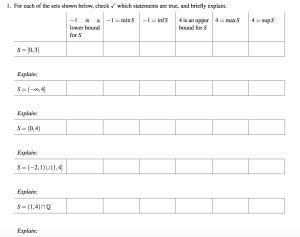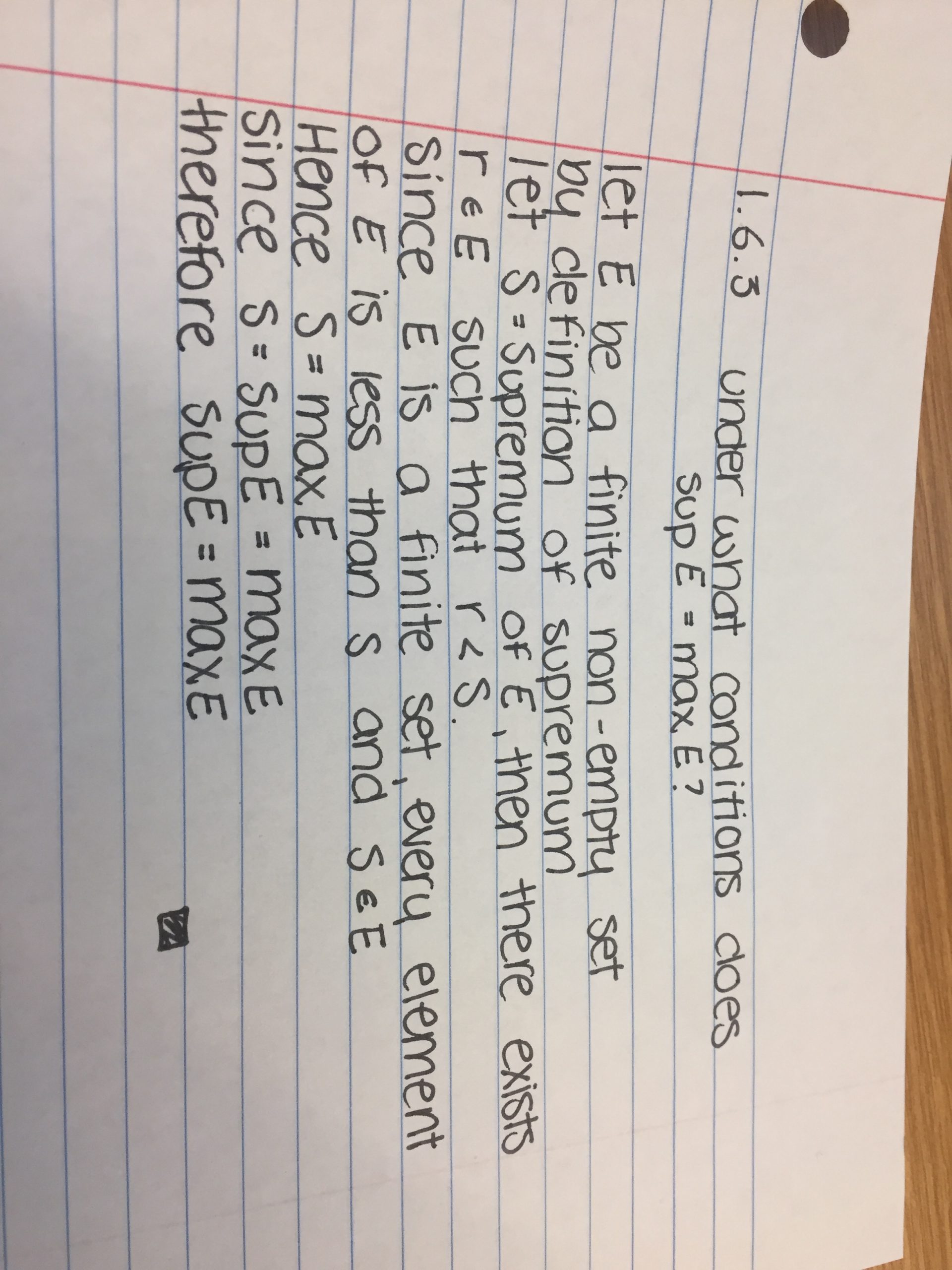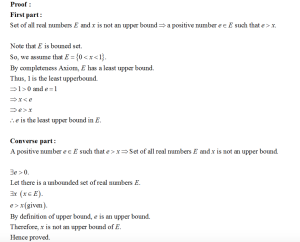Lauren Hesemeyer, Allison Kingston, Mackenzie Cherry
1.X THE AXIOMATIC STRUCTURE OF THE REAL NUMBERS II
Two Resources:
http://web.mat.bham.ac.uk/R.W.Kaye/seqser/supinf.html
*This resource is copyrighted to Richard Kaye. It does not specify what type of copyright.
I feel this source provides useful information in regards to the understanding of supremums and infimums, as well as providing us with a different view on the completeness axiom.
https://www.math.ucdavis.edu/~hunter/m125b/ch2.pdf
*This source is copyrighted to John K. Hunter. It does not specify what type of copyright.
I feel this source gives not only another view of the definitions of supremums, infimums, maximums and minimums, but also provides various proofs, similar to what we have done in class.
Based on the information provided in the previous two sources, we can develop strict definitions and proofs of supremum and infimum. The definition for Supremum, as stated in our textbook it is : Let E be a set of real numbers that is bounded above and nonempty. If M is the least of all upper bounds for E, then M = supE is called the supremum of E. The definition of Infimum is : Let E be a set of real numbers that is bounded below and nonempty. If m is the greatest of all upper bounds for E, then m = infE is called the infimium of E.
To fully comprehend the definitions above one must also know the meaning of upper and lower bound, respectively they are also provided in the textbook. The definition of upper bound is : Let E be a set of real numbers. A number M is said to be an upper bound for E if, for all x exists in the set E, we have x is less than or equal to M. Lower bound is : Let E be a set of real numbers. A number m is said to be a lower bound for E if, for all x exists in the set E, we have x is greater than or equal to m.
Here is another resource I can use that specify what type of copyright they use:
http://pdxscholar.library.pdx.edu/cgi/viewcontent.cgi?article=1015&context=pdxopen
*This source is CC, BY and NC copyrighted.
We chose this source because the examples provided within it may be helpful to review. One assignment we worked on in class that was useful is the problem attached below.

Here is a link that provides the solutions to the example above. I highly suggest giving the chart a try yourself prior to watching the video, it will really give you a understanding on the relationships between the different subjects.
https://www.youtube.com/watch?v=2dF3egLleKA&list=PLL0ATV5XYF8BZx6_DvwgjgkjC2x9n4ZV-&index=20
One of the main goals that we struggled with in this section was proving the definitions. When proving supremum you need to show that it has a upper bound and that it is the least upper bound. Alternatively when proving infimum you must show that it has a lower bound and it is the greatest lower bound.
Attached below is an example from a students answer attempting to prove infimum.

The professor’s feedback to this student’s answer was, “The only place I can poke a hole in your reasoning is You say that E is “bounded to the left by m,” in other words, that m is a lower bound for E, which is correct. What’s missing is an argument for why m MUST be the GREATEST lower bound. Try contradiction.” Now try to use this feedback to correct the student’s mistakes, this will help you expand your knowledge on the topic; as well as expanding your general proof skills.
Once you have tried it on your own compare it to the professor’s solution.

Exercises: (From our class textbook
- pg. 14 Exercise 1.6.3

2. pg. 16 Exercise 1.6.16
Let E be a set of real numbers. Show that x is not an upper bound of E if and only if there exists a number e ∈ E such that e > x.

